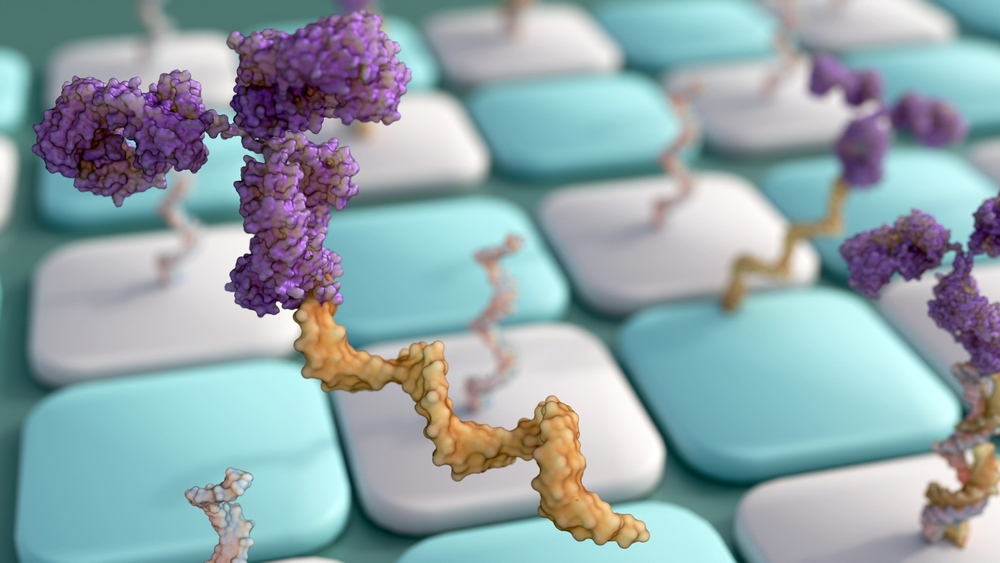In the evolving landscape of drug development, oligonucleotide drugs (ONDs) stand at the forefront of innovative therapeutic solutions. As the pharmaceutical industry shifts towards addressing complex genetic disorders and resistant forms of cancer, ONDs offer a promising avenue due to their ability to precisely target and modulate gene expression.
ONDs are categorized into four main types based on their mechanism of action:
- Antisense Oligonucleotides (ASOs): These single-stranded DNA molecules bind to RNA, leading to gene silencing either through RNA degradation or translation blocking.
- Small Interfering RNA (siRNA): This double-stranded RNA form induces gene silencing by degrading messenger RNA that matches its sequence.
- MicroRNA (miRNA): These naturally occurring molecules regulate gene expression by similar mechanisms to siRNAs.
- Aptamers: Structured single-stranded entities that bind to specific proteins, modulating their activity.
This transformative class of therapeutics leverages the fundamental principles of Watson-Crick base pairing to correct the expression of malfunctioning proteins. Watson-Crick refers to the pairing rules established by James Watson and Francis Crick, where adenine (A) pairs with thymine (T) in DNA (or uracil (U) in RNA), and cytosine (C) pairs with guanine (G). Oligonucleotide therapeutics are designed to specifically bind to complementary sequences in the RNA of a target gene following these base pairing rules, except aptamers, which bind to proteins.
RELATED: 5 Tips to Navigating Antisense Oligonucleotide Drug Development
By binding to mRNA transcripts in a sequence-specific manner, ASO, siRNA and miRNA oligonucleotide therapeutics can interfere with the process of protein production. This selective binding is used to either block the translation of mRNA into protein, modify splicing patterns, or cause the degradation of the mRNA, thus reducing or altering the production of proteins that are implicated in disease. Aptamers are designed to bind specifically and tightly to certain targets, such as proteins, and modulate the target in various ways, depending on the intended therapeutic effect.
Oligonucleotide therapeutics can be used to address genetic disorders, cancers, and other diseases where the modulation of gene expression can alter the course of the disease. For example, they can be used to increase the production of a beneficial protein, decrease the production of a harmful protein, or correct abnormal splicing patterns in genetic diseases.
Bioanalysis in OND Development
The journey of ONDs from concept to clinic presents unique challenges, particularly in bioanalysis—a critical component in the drug development process. Given their distinct molecular structure and action mechanisms, ONDs confront more daunting stability and delivery hurdles compared to their small molecule and protein drug counterparts. Their hydrophilic and polyanionic nature necessitates innovative strategies to ensure stability, avoid rapid degradation, and facilitate efficient delivery to target cells.
As American and European regulatory agencies have collectively approved 17 ONDs as of July 2023—with a significant surge in approvals over the past decade—the need for robust bioanalytical methods has become increasingly apparent. Despite the progress, the industry and regulatory bodies face the absence of clear guidelines for OND bioanalysis, calling for a collaborative effort to develop and refine analytical technologies that can address these unique challenges.
Navigating Bioanalytical Complexities
The bioanalysis of ONDs necessitates methodologies capable of quantitatively analyzing these drugs in biological matrices and exploring their pharmacological properties. Traditional techniques fall short due to ONDs’ hydrophilicity, negative charge, and chemical modifications. The sector has pivoted towards advanced chromatographic assays, like liquid chromatography-tandem mass spectrometry (LC-MS/MS), and hybridization-based assays, which offer the sensitivity, specificity, and accuracy needed for OND analysis. However, each method comes with its own set of limitations, from sensitivity issues with increasing molecule length in chromatographic methods to the inability to detect drug metabolites in hybridization-based assays.
RELATED: Must-Have Qualities of a Bioanalytical Method Development & Validation Partner
The pursuit of precision in OND bioanalysis underscores the necessity for a methodical selection of analytical approaches, considering factors such as molecule length, chemical modifications, and the need for metabolite detection. As the industry strives to align on testing standards that satisfy all stakeholders, including regulatory agencies, the role of academic research and industry innovation becomes critical.
The Road Ahead: Regulatory and Research Implications
The rapid growth in OND approvals, particularly for rare diseases and cancer therapy, illustrates their potential to address unmet medical needs. Yet, the journey is just beginning. The pharmaceutical industry, backed by regulatory support, must navigate the complexities of OND development, from stability and delivery challenges to the intricacies of bioanalysis.
RELATED: 3 Therapeutic Considerations for the Future of Oligonucleotide Development
This evolving landscape demands a concerted effort to establish comprehensive regulatory guidelines and foster advancements in bioanalytical methodologies. WuXi AppTec’s Bioanalytical Services, with its extensive experience in OND analysis and a suite of chromatography (LC-MS/MS, LC-FLD) and molecular hybridization platforms (qPCR, ddPCR and hybridization-ELISA/MSD), exemplifies the collaborative approach needed to propel OND therapeutics forward. By offering customized and integrated services, WuXi AppTec supports the broader goal of advancing OND therapies from the laboratory to the patient, addressing the complexities of rare diseases and beyond. As the drug development industry continues to explore the vast potential of oligonucleotide therapeutics, the emphasis on innovative bioanalytical strategies will be paramount. Together, through research, collaboration, and regulatory evolution, we can unlock the full potential of ONDs, ushering in a new era of precision medicine.
A Final Word
Overall, oligonucleotide therapeutics represent a promising class of drugs that can be finely tuned to target specific genetic messages within the body. This precision allows them to potentially treat diseases with a level of specificity not easily achievable with traditional small molecule drugs.
Learn more about WuXi AppTec’s bioanalytical services or talk to an expert today.
As a global company with operations across Asia, Europe, and North America, WuXi AppTec provides a broad portfolio of R&D and manufacturing services that enable the global pharmaceutical and life sciences industry to advance discoveries and deliver groundbreaking treatments to patients. Through its unique business models, WuXi AppTec’s integrated, end-to-end services include chemistry drug CRDMO (Contract Research, Development and Manufacturing Organization), biology discovery, preclinical testing and clinical research services, helping customers improve the productivity of advancing healthcare products through cost-effective and efficient solutions. WuXi AppTec received an AA ESG rating from MSCI for the fourth consecutive year in 2024 and its open-access platform is enabling around 6,000 customers from over 30 countries to improve the health of those in need – and to realize the vision that “every drug can be made and every disease can be treated.”


